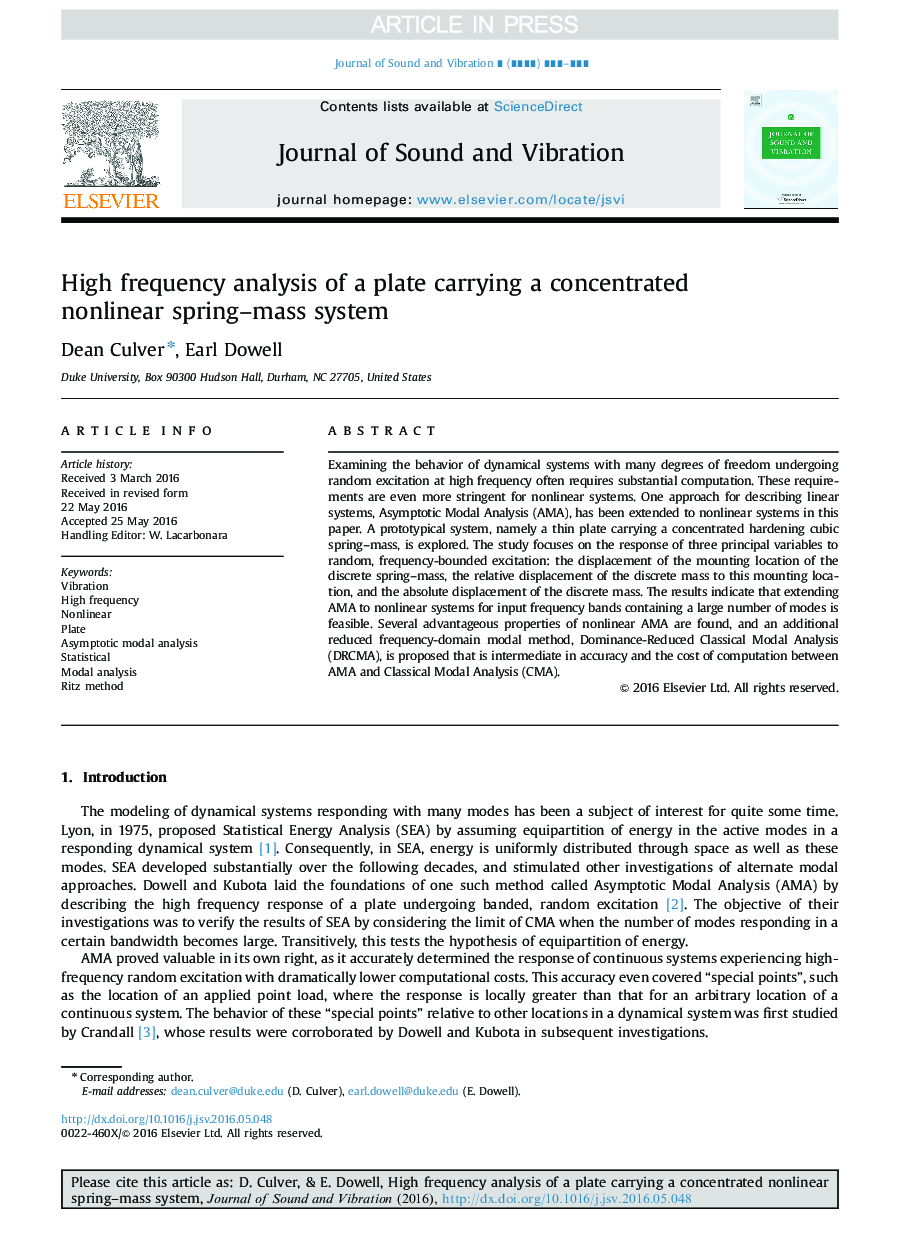| Article ID | Journal | Published Year | Pages | File Type |
|---|---|---|---|---|
| 6754310 | Journal of Sound and Vibration | 2016 | 22 Pages |
Abstract
Examining the behavior of dynamical systems with many degrees of freedom undergoing random excitation at high frequency often requires substantial computation. These requirements are even more stringent for nonlinear systems. One approach for describing linear systems, Asymptotic Modal Analysis (AMA), has been extended to nonlinear systems in this paper. A prototypical system, namely a thin plate carrying a concentrated hardening cubic spring-mass, is explored. The study focuses on the response of three principal variables to random, frequency-bounded excitation: the displacement of the mounting location of the discrete spring-mass, the relative displacement of the discrete mass to this mounting location, and the absolute displacement of the discrete mass. The results indicate that extending AMA to nonlinear systems for input frequency bands containing a large number of modes is feasible. Several advantageous properties of nonlinear AMA are found, and an additional reduced frequency-domain modal method, Dominance-Reduced Classical Modal Analysis (DRCMA), is proposed that is intermediate in accuracy and the cost of computation between AMA and Classical Modal Analysis (CMA).
Related Topics
Physical Sciences and Engineering
Engineering
Civil and Structural Engineering
Authors
Dean Culver, Earl Dowell,
